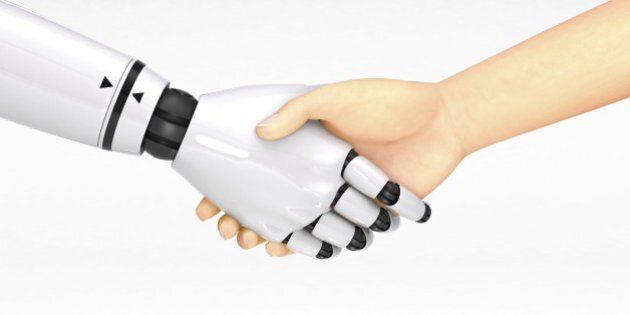
We are engaging and interacting with machines on a daily basis. And by that, we are not communicating through machines, but we are communicating to machines, and these machines engage with us in a solid two-way interaction. The popularity of machine learning, where machines operate and respond autonomously to stimuli without human intervention, has been demonstrated in its use for a multitude of purposes across the technology spectrum.
The most common exemplification of machine learning are product recommendations that are offered through mostly all e-commerce platforms. The way they work is simple: for each item (we'll call it X), Amazon, eBay or Netflix create a collective of other related items. The items in the collective are based on X's genre, on what other consumers have purchased in addition to X, X's most likely complements, among other factors. The recommendations are then provided from that collective.
Facebook's facial recognition software is another prime example of machine learning. Facebook's facial recognition-powered photo app, Moments, packages pictures together by the event they're taken at, and applies facial recognition technology to identify who's in each picture. Once users create their "moments", they can share them with other people who attended the same event, and in this way, every one ends up having the photos that they were in.

As Facebook says: "It's hard to get the photos your friends have taken of you, and everyone always insists on taking that same group shot with multiple phones to ensure they get a copy. Even if you do end up getting some of your friends' photos, it's difficult to keep them all organised in one place on your phone."
The true vigor of machine learning resonated with Google's self-driving car. The notion that a car can self-drive and operate without a driver was striking enough, but what was more remarkable was how the car got programmed to self-drive - by observing people driving, and driving millions of miles. The act of programming itself was human-free.
Nevertheless, the applicability of machine learning will break new grounds when it solves problems that humans have been forever battling with. One of those is curing the leading cause of death in the world - cancer.
In one study, researchers from MIT and Stanford "propose models that use machines to suggest regimens to be tested in phase II and phase III trials." The models could help cut costs and accelerate clinical trials. Their work also focuses on combination therapy, arguably the toughest to model but has been proven the more effective for most cancers.

The second study, by researchers from Regenstrief Institute and Indiana University School of Informatics and Computing, discovered that algorithm-powered tools were as good as or better than human reviewers in detecting cancer cases using data from specific reports. Furthermore, the algorithm-powered approach was faster and more efficient in comparison to human aided diagnosis.
"Machine learning can now support ideas and concepts that we have been aware of for decades, such as a basic understanding of medical terms," said study senior author Shaun Grannis, Interim Director of the Regenstrief Center of Biomedical Informatics. "We found that artificial intelligence was as least as accurate as humans in identifying cancer cases from free-text clinical data. For example the computer 'learned' that the word 'sheet' or 'sheets' signified cancer as 'sheet' or 'sheets of cells' are used in pathology reports to indicate malignancy."
Our overreliance on technology occasionally elicits claims that we are giving it more credit that it's due, and in essence we have it fall short by over-trusting it with problems that are above its paygrade. Finding a cure to cancer has been an arduous process for mankind. The power we have given machine learning can confidently be warranted if it can potentially help in this quest.
Follow HuffPost Canada Blogs on Facebook